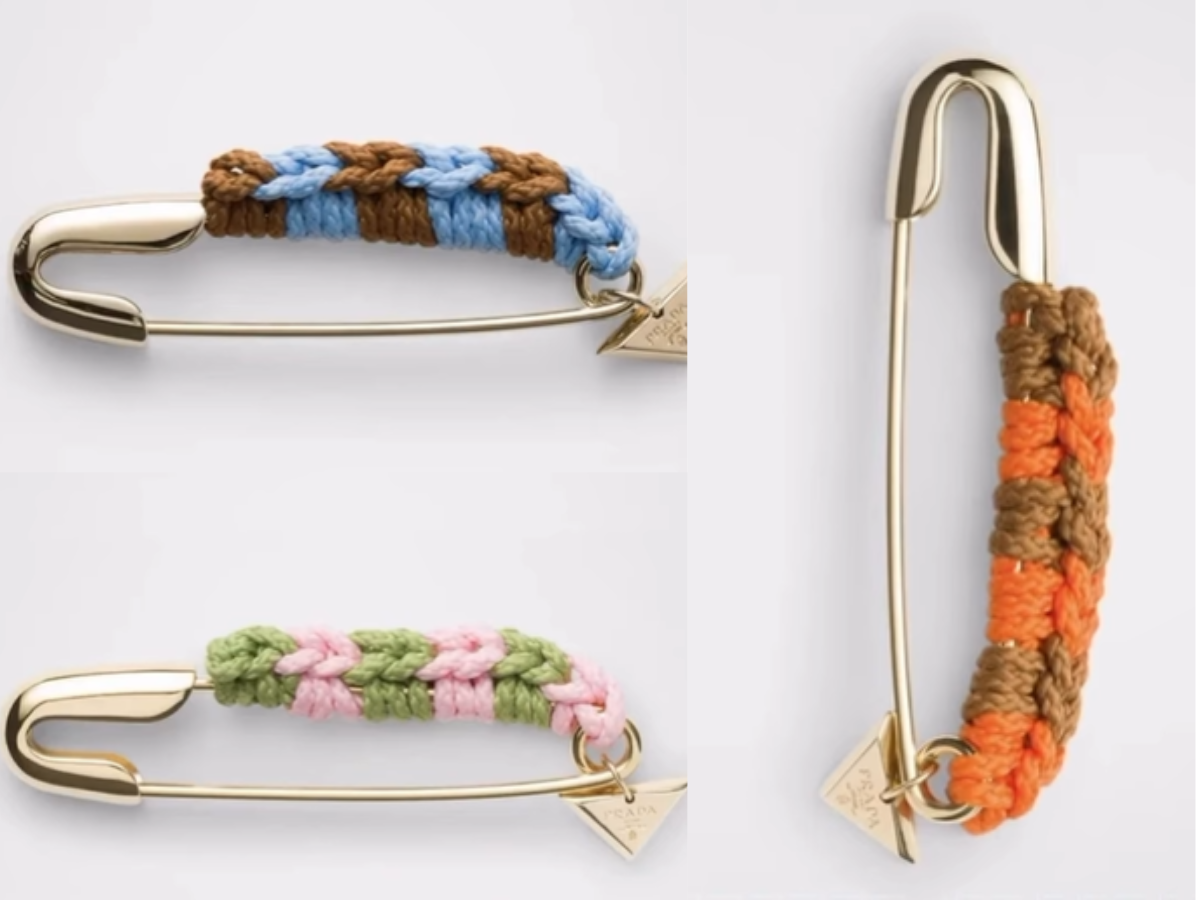Just SAFETY PIN Controversy Returns as Prada Faces Strong Backlash in 2025
Just SAFETY PIN has unexpectedly become the center of a major discussion in the fashion world after Prada released a basic metal brooch priced around ₹38,000. The item carries no special element beyond the brand logo, yet it has created a strong reaction across social platforms. The debate raises questions about how far luxury pricing can stretch before it loses connection to real value. This moment is not the first time the brand has been accused of unusual pricing, and it appears to have revived earlier arguments surrounding cultural respect and market strategy.
The new brooch arrived only months after Prada was already criticized for introducing leather sandals that resembled traditional Kolhapuri designs. Many Indian fashion observers argued that the footwear failed to acknowledge the cultural roots that inspired the silhouette. With the arrival of this new brooch, the earlier criticism has resurfaced, leading to wider discussions about authenticity, intention, and the gap between luxury branding and consumer expectations.
Just SAFETY PIN and the Shift in Luxury Pricing Perception
Luxury brands often rely on minimalistic designs supported by strong branding, but the price tag attached to this particular item has triggered broader reflection. A simple brooch ordinarily serves a practical or decorative purpose, yet when it is priced close to a smartphone, the contrast becomes obvious. Several consumers see this as an example of extreme minimalism marketed at a premium, while others believe it represents a detachment from everyday reality.

Industry analysts suggest that luxury pricing is heavily driven by brand identity rather than material value. In this case, the brooch symbolizes how prestige can overshadow utility, turning an ordinary item into a status marker. However, the pushback shows that even loyal customers recognize the limits of such pricing models. This reaction suggests that brand reputation alone may not justify the jump in cost as easily as it once did.
Just SAFETY PIN and Renewed Cultural Sensitivity Concerns
The reappearance of cultural discussion is not surprising, as the earlier Kolhapuri-style sandals sparked a strong debate in India. Many felt that traditional craftsmanship deserved acknowledgment, especially when global brands adapt regional designs for international markets. The new brooch controversy has indirectly revived these concerns because it reflects a repeating pattern where cultural roots and pricing transparency seem overlooked.

Even though the brooch itself is not culturally linked, the public reaction shows that consumers now view luxury items more critically. They expect brands to maintain consistency, respect influences, and deliver genuine value. When these expectations are not met, criticism escalates rapidly, as seen in this situation.
View this post on Instagram
A post shared by Bengaluru For You | Bangalore For You 💛❤️ (@bengaluru4u)
Just SAFETY PIN and the Growing Demand for Responsible Branding
The incident also highlights a shift in consumer behavior. Buyers today examine product purpose, craftsmanship, and authenticity before accepting premium pricing. A metal brooch with minimal features challenges these expectations and raises doubts about how much of the cost is tied to actual design versus branding strategy.

This shift suggests that luxury companies may have to reconsider how they position such items. Transparent storytelling, cultural respect, and meaningful design choices are becoming essential for long-term credibility. Without these elements, even established brands face immediate and widespread scrutiny. Also Read: Parineeti Chopra: 1 Heartfelt Reveal That Has Captured Everyone’s Attention
Conclusion
The Just SAFETY PIN moment shows how quickly public sentiment can turn when value and intention do not align. Prada’s brooch has become a reminder that luxury branding alone is no longer enough to justify steep pricing, and consumers today expect clarity, respect, and authenticity from every product a major brand releases.

